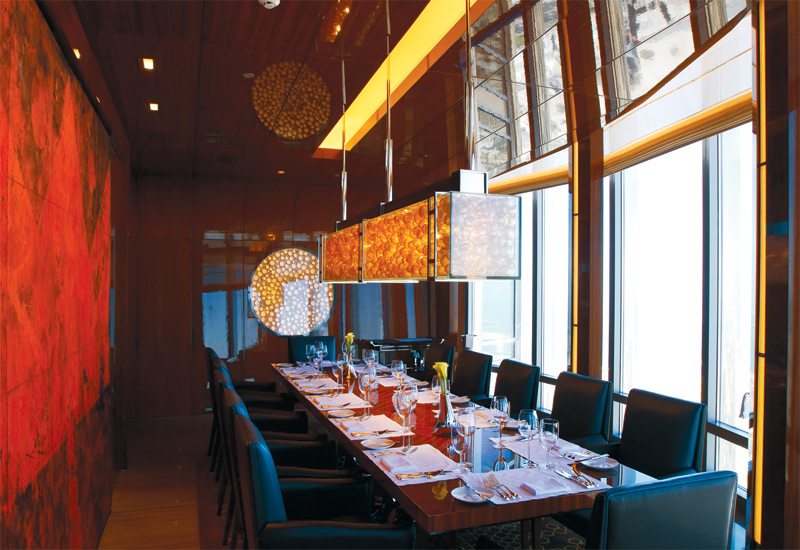The aim was to create a relaxed place rather than an “ultra-fine dining” experience, says executive chef Dwayne Cheer, and this theme runs from the décor through to the kitchen.
“We want people to feel at home and feel comfortable, not with food that’s over complicated or molecular — something that’s honest and tastes how it should,” says Cheer.
“It’s all about the product and evolving it into something that’s sublime or to make it taste like it should. So a celeriac puree tastes like celeriac.

| Advertisement |
[The goal is] to be able to transform it from something raw to something velvety and sublime that tastes like ‘wow this is celeriac’.”
As a result, the quality of raw ingredients used at At.mosphere is vital — and it is the quality of produce that is reflected in the menu prices, not the height of the building in which the restaurant is situated. Cheer is adamant that quality makes a difference, such as sourcing a fresh diver scallop from Norway rather using frozen.
“Some chefs will tell you that you cook it and you can’t taste the difference, I’m telling you that you can and it’s important,” says Cheer.
“I buy scallops that work out to be AED 255 per kilo whereas scallops down the road cost AED 65 a kilo. Down the road you [the guest] pay AED 100, here you pay AED 140, so I’m not making a lot of money as we don’t want to freak people out by how much it costs, so at the moment our profit margins are very low because of the quality that we use.”
Profits across At.mosphere will be boosted ultimately by The Lounge, which enables people to come to At.mosphere for a few drinks, afternoon tea or light dinner.
“For any chef that works in this environment it’s the perfect harmony between quality products and getting the money for them. If we sell 10 burgers in the Lounge or 10 ‘AFC’ (At.mosphere Fried Chicken), then I can buy a kilo of truffles, so eventually we will make more money in The Lounge and that will help the restaurant.”









 Search our database of more than 2,700 industry companies
Search our database of more than 2,700 industry companies









